Topics:
Never Miss a Beat - Get Updates Direct to Your Inbox
FILTER:


Funnel Optimization Lessons from a Master
By Quiet Light
Picture this:
I click on a well-placed Instagram ad for 30% off a pair of running shoes I’ve been considering.
I read over the product description and verify the price.
I check out the color options and pick pale blue. Then change my mind and choose red.
But the pale blue beckons, so I switch back and then scroll down to the “Buy Now” button…
When the light turns green.
I quickly toss my phone on the passenger seat and drive on.
It’s not proper driving, but it illustrates an important point.
In an ideal world, your customers find you and love you. And never leave.
Prospects land on your website and stick around long enough to actually make a purchase.
But in reality, customers are now sitting at stoplights or in the middle of meetings at work where interruptions are imminent.
The list of subsequent alternate events seems infinite.
For online business owners, the moment a customer enters our sales funnel becomes the moment of truth.
Optimizing. Refining. Tweaking.
Just a few euphemisms for what we’re actually doing… Obsessing.
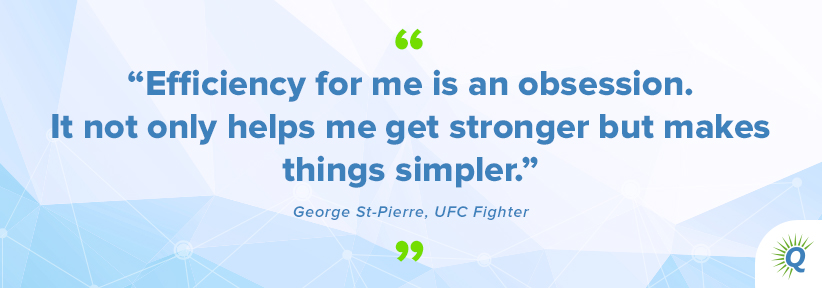

When it comes to the funnel, some say our work is never done.
Anyone looking to grow a company’s valuation as well as increase multiples knows that it’s worth it.
Dustin Ray, co-owner of Incfile.com and former marketing ninja with Monster Energy, is living proof that the obsession pays off.
When Dustin first got involved with Incfile, he admits he wasn’t a tech guy and knew next to nothing about CRO (Conversion Rate Optimization).
Now, many years later, he’s mastered funnel optimization to the point of 50-80% year-over-year revenue growth since he came on board full-time in 2014. Let’s take a look at the basics of funnel optimization and explore some key insights from Dustin’s years of experience scaling an online company successfully.
The Bird’s Eye View of a Great Sales Funnel
Optimizing the Top and Middle of the Funnel
Top of the funnel – Acquisition
Middle of the funnel – Activation
The Bird’s Eye View of a Great Sales Funnel
In the early days of building a company, traction is everything.
And traffic.
The best product in the world won’t exist for long without solid and continuous customer acquisition results.
To scale to the size of a sellable company with attractive revenues and high multiples, you’ll have to get that top-of-funnel activity pinned down.
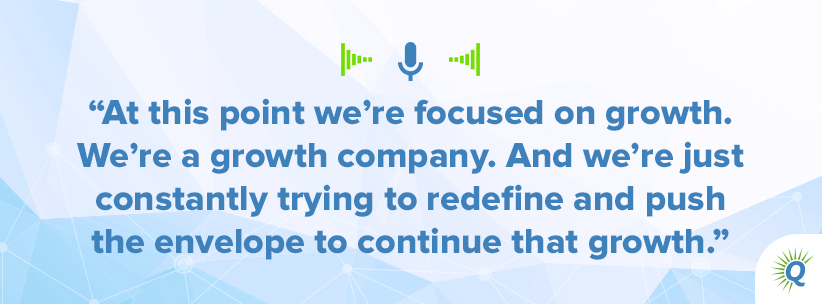

Models for the sales funnel abound, but I like Dave McClure’s broad startup-metrics model from his Pirate Metrics. (AARRR!)
It’s sort of a meta-model that helps put the whole customer experience in perspective and allows a big-picture context for the sales funnel.
It looks like this:
Acquisition – How do customers find you?
Activation – Do they have a great experience and convert?
Retention – Do they come back?
Revenue – How do you make money?
Referral – Do customers tell others?
Those five stages encompass the whole scope of critical metrics that every business owner might obsess over (I mean optimize) on the way to traction and scalability.
Acquisition brings the traffic. That’s the stage where you keep an eye out for new channels and measure all efforts against the Lifetime Value (LTV) of your customer.
You focus on SEO and evergreen content on the “free” side of things, honing in on specific longtail keywords and building links through outreach.
On the paid side, you look for the highest-volume, highest-converting, but lowest-cost platforms you can find, while staying alert to what Andrew Chen calls the “Law of Shitty Click-throughs.”
That pesky law that says the best channel now will become increasingly more expensive and less effective over time.
Once you have a steady flow of traffic coming in, it’s time to obsess over the Activation phase.
This is where the psychology of the funnel gets fascinating.


What happens when a prospect lands on the site? Should you have distinct landing pages for prospects segmented by traffic source?
What does the journey look like from content to purchase?
Does your homepage have one CTA or many?
What happens if a visitor is interested, but not ready to purchase yet?
How do you stay in touch?
These are the questions that an optimized sales funnel answers efficiently and with elegance.
From Dustin’s experience, every great funnel needs to meet these criteria:
It’s quick.
It’s simple.
All user engagement is tracked and measured.


Even at Incfile, where forms might go on for 15 pages, they focus on taking the least amount of time while requiring the least amount of thought and effort from the customer possible.
First, they know their customers – busy entrepreneurs wearing too many hats without enough hours in the day already.
Second, if you want a funnel to convert, Dustin advises…simplify. Simplify. Then simplify again.
We’ll get to tracking and measuring data in a bit.
But first, let’s explore what optimizing those first two stages of the AARRR! model looks like in practice.


Optimizing the Top and Middle of the Funnel
Here are some best practices from Sean Johnson’s Guide to Funnel Optimization course on Udemy.
Top of the funnel – Acquisition
The main tools you have to work with at the top of the funnel include:
- SEO
- Content
- Paid Advertising
When it comes to SEO, make sure your site is crawlable.
It should load as quickly as possible.
Especially important for WordPress sites…Do you have duplicate content?
If so, eliminate it. (Google hates that.)
Know that 15% of all searches involve never-before-searched phrases, according to Google.
Refine and target the long-tail keyword phrases that are not only less competitive and easier to rank but convert better because they’re more intent-based in nature.
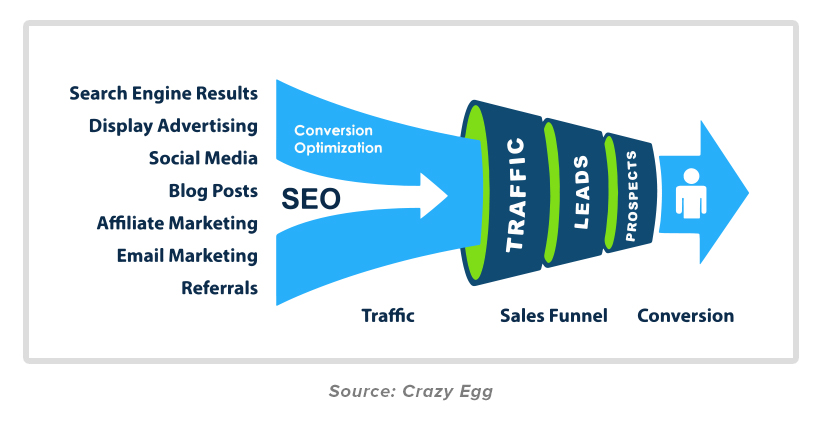

Get keywords in your title tags, meta descriptions, and alt text for images but include them in the body copy of your pages naturally.
When it comes to content, think evergreen, and cover the problem you’re solving, not the product you’re selling.
Experiment with longer content and publish frequently. According to Hubspot, 16 posts or more per month get the best overall traffic results.
Experiment with CTA’s at the end of posts, but don’t neglect them.
Use content of all types to offer more information and collect emails, testing language on your offers all the while.
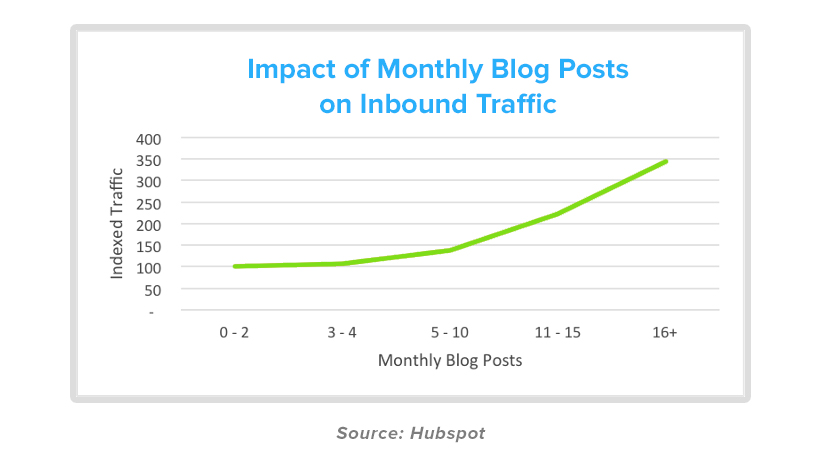

When it comes to paid advertising think A/B or multivariate testing of your creative elements, your CTA’s, your copy.
The unique advantage afforded by paid advertising platforms like Facebook and YouTube are their extensive targeting capabilities.
Your goal is to optimize for CPA by ultimately using the customer data you have to target the most valuable customers you want to find.
Paid advertising excels at this, and the obsession possibilities are endless.
Middle of the funnel – Activation
If optimizing at this stage of the funnel doesn’t prove that humans are the most unpredictable creatures ever, I don’t know what does.
A change of a word here and a punctuation mark there sometimes have enormous and completely unforeseeable results.
CRO experts are constantly reminding us all to exercise patience and expect lots of failed tests. But keep testing anyway.


The most effective landing pages involve a straightforward headline, usually one prominent image or video, and a compelling CTA.
We know the CTA should be above the fold and large, this is no place to be subtle. But test it for yourself.
Dustin’s advice rings true here… Don’t dilute your purpose.
Lookcraft.com eventually achieved 50% homepage-to-email conversion by gradually removing everything on the page except the single CTA.
Keep it simple. Stick to your one most effective CTA. And don’t ask your prospects to work or think too hard.
Experiment with language, but list benefits, not features.
Experiment with the placement of different types of social proof.


The name of the game with your sign-up process is… easy.
Dustin points out that your sign-up process is no place to front load or bog down your customers if you want them to convert.
You can always collect more information during onboarding.
Make sure errors show up right away in-line rather than after customers submit the form, and experiment with copy here as well.
In every way, seek to reduce friction.
Reduce pricing options to just a few to avoid analysis paralysis and offer guidance by pointing out the “best” option.
Experiment with social sign-up options and be sure to explain what happens after the form is complete. Hand holding? Yes!
If you offer a free trial, expect a considerable conversion lift if you don’t ask for credit cards up front.


Email Conversions are yet another place for A/B testing.
Ideally, you’ll be able to capture the emails of those prospects who don’t convert.
One of the first places to experiment here is with subject lines.
Use a small test group from a larger list. Divide it into two groups, then test two versions of a subject line.
That way you’ll optimize for open rate when you email the larger list.
In terms of metrics, most will tell you to aim for a 20-30% open rate and a 5% or better click-through rate.
Always include a single CTA (simplify) at the end of emails.
Customer.io is a great tool for testing email sequences sent to those sign-up-process abandoners.
Segmentation of your subscriber list is another critical and powerful area of experimentation you’ll want to take advantage of.
How to Track Your Data
According to Dustin, you must track every engagement if you want to (be super obsessive and) achieve an effective funnel.
Dustin recommends two tools for working with your data and for marrying the two types of data: Google Analytics and Visual Website Optimizer.


The two types of data you’ll be collecting and then analyzing:
- Quantitative – Numerical data. This involves the cold hard facts and allows you to analyze traffic patterns on your website collected from Google Analytics
- Qualitative – Behavioral data. This involves user reports such as live recordings that allow you to experience a test subject’s behavior and their reaction to your website first hand. Very revealing.
Live chat on your site is another excellent way to collect qualitative information, which will help draw conclusions about customer experience, common objections, or stumbling blocks to the sign-on or check-out process.
Heat maps and scroll maps represent the concentration of different types of behavior visually as well.
Everything hinges on the data you collect.
Without it and the without the ability to measure the results of your experiments, you’re not optimizing, you’re just making random changes.
And of course, if you want to measure results, you’ll need KPIs (Key Performance Indicators).
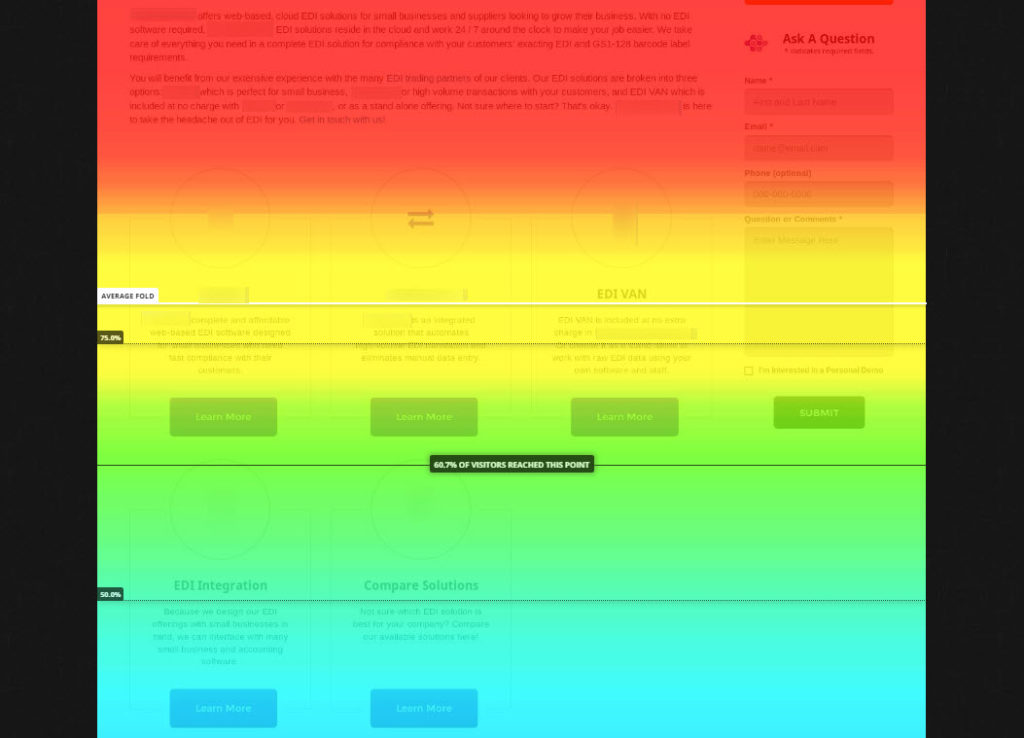



What KPIs Matter Most?
The major KPIs you’ll want to measure fall under two main categories:
- Macro goals/conversions – these are the primary goals of the website (shhh… don’t tell Google). For most online businesses these involve free trials, demo or quote requests, and actual revenues.
KPIs here include Cart Abandonment and Sales, for instance. With macro goals, conversion rate is relatively simple.
- Micro goals/conversions – these are the smaller steps or milestones that lead to one of the macro goals. Think clicking a link in an email, viewing a video, downloading a free report, or subscribing to the newsletter.
KPI’s which measure micro-conversions include click-through rates on email sequences, bounce rate, and traffic to blog posts, landing pages, product pages, etc.
With micro-goals, conversion rates get a little more complex. Here “conversion” means fulfilling the goal of that step or moving along the funnel.


By tracking and measuring micro conversions as you optimize, you can do things like assess the quality of leads from certain sources or ad channels; identify stumbling blocks or points of friction across the customer journey; better understand your prospective customers’ intentions for visiting your website to begin with.
Best Place to Begin
Begin experimenting, but luckily you can follow along with the experience of others online as you go.
It’s one of the bonuses of the ecommerce world – the sometimes astonishing generosity of so many of our fellow entrepreneurs.
For Dustin, who says he started out in online business without much coding knowledge or experience in tech at all, a key source of information became the podcasts of the more experienced entrepreneurs at the time.
That was many years ago, but the possibilities for learning from those who are a few steps ahead in this business just continue to expand.
It’s still the best way to learn.
And as others on the Quiet Light Podcast have said, it’s probably more important that you begin than where you begin.
Just be warned… as you can probably tell from this brief overview, the possibilities for testing are almost endless and as you begin to see results, you just might get hooked.





